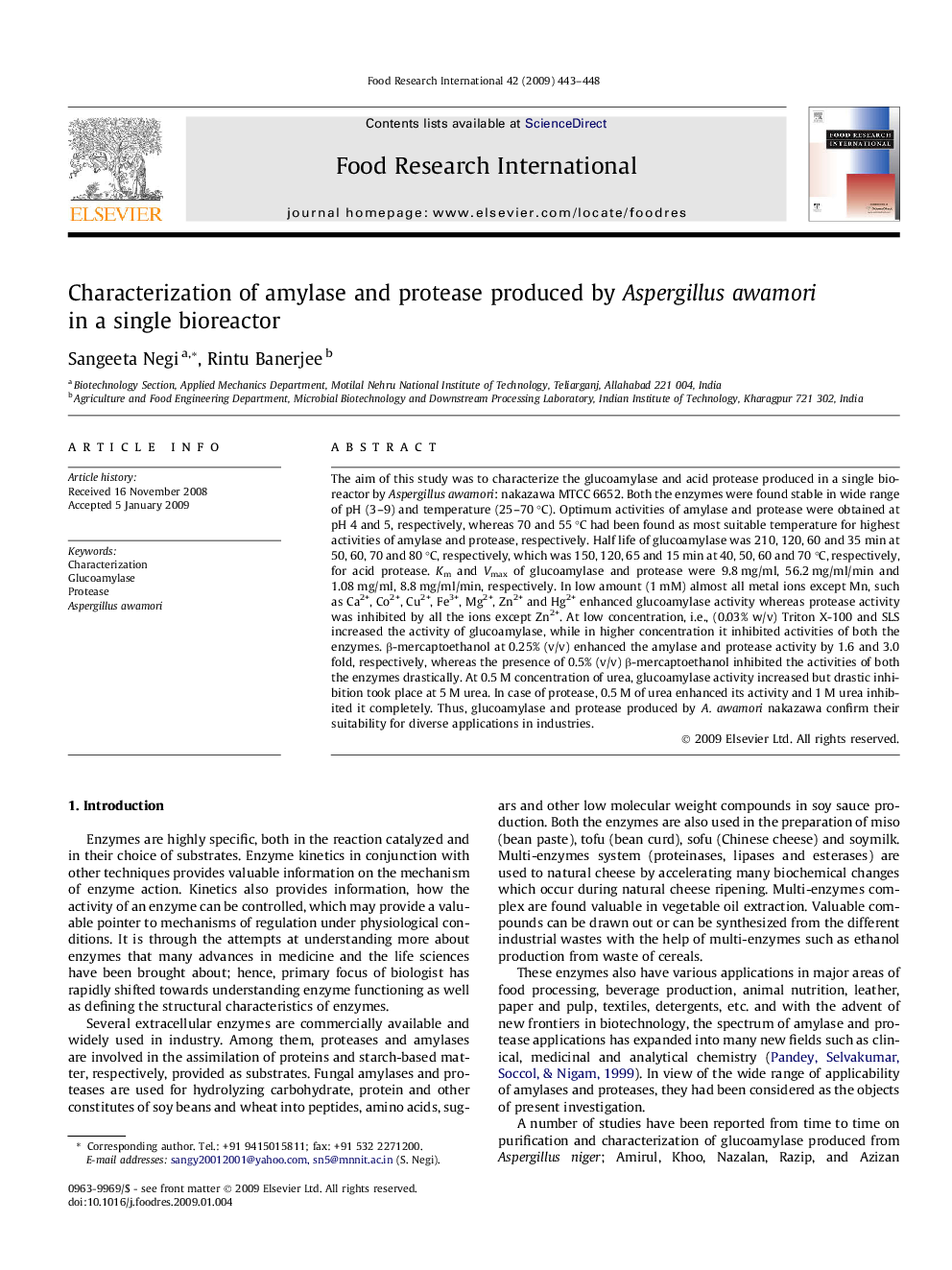| Article ID | Journal | Published Year | Pages | File Type |
|---|---|---|---|---|
| 4562857 | Food Research International | 2009 | 6 Pages |
The aim of this study was to characterize the glucoamylase and acid protease produced in a single bioreactor by Aspergillus awamori: nakazawa MTCC 6652. Both the enzymes were found stable in wide range of pH (3–9) and temperature (25–70 °C). Optimum activities of amylase and protease were obtained at pH 4 and 5, respectively, whereas 70 and 55 °C had been found as most suitable temperature for highest activities of amylase and protease, respectively. Half life of glucoamylase was 210, 120, 60 and 35 min at 50, 60, 70 and 80 °C, respectively, which was 150, 120, 65 and 15 min at 40, 50, 60 and 70 °C, respectively, for acid protease. Km and Vmax of glucoamylase and protease were 9.8 mg/ml, 56.2 mg/ml/min and 1.08 mg/ml, 8.8 mg/ml/min, respectively. In low amount (1 mM) almost all metal ions except Mn, such as Ca2+, Co2+, Cu2+, Fe3+, Mg2+, Zn2+ and Hg2+ enhanced glucoamylase activity whereas protease activity was inhibited by all the ions except Zn2+. At low concentration, i.e., (0.03% w/v) Triton X-100 and SLS increased the activity of glucoamylase, while in higher concentration it inhibited activities of both the enzymes. β-mercaptoethanol at 0.25% (v/v) enhanced the amylase and protease activity by 1.6 and 3.0 fold, respectively, whereas the presence of 0.5% (v/v) β-mercaptoethanol inhibited the activities of both the enzymes drastically. At 0.5 M concentration of urea, glucoamylase activity increased but drastic inhibition took place at 5 M urea. In case of protease, 0.5 M of urea enhanced its activity and 1 M urea inhibited it completely. Thus, glucoamylase and protease produced by A. awamori nakazawa confirm their suitability for diverse applications in industries.
